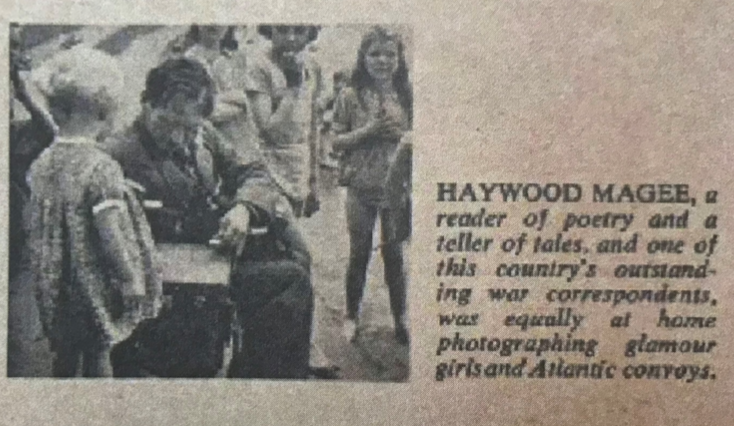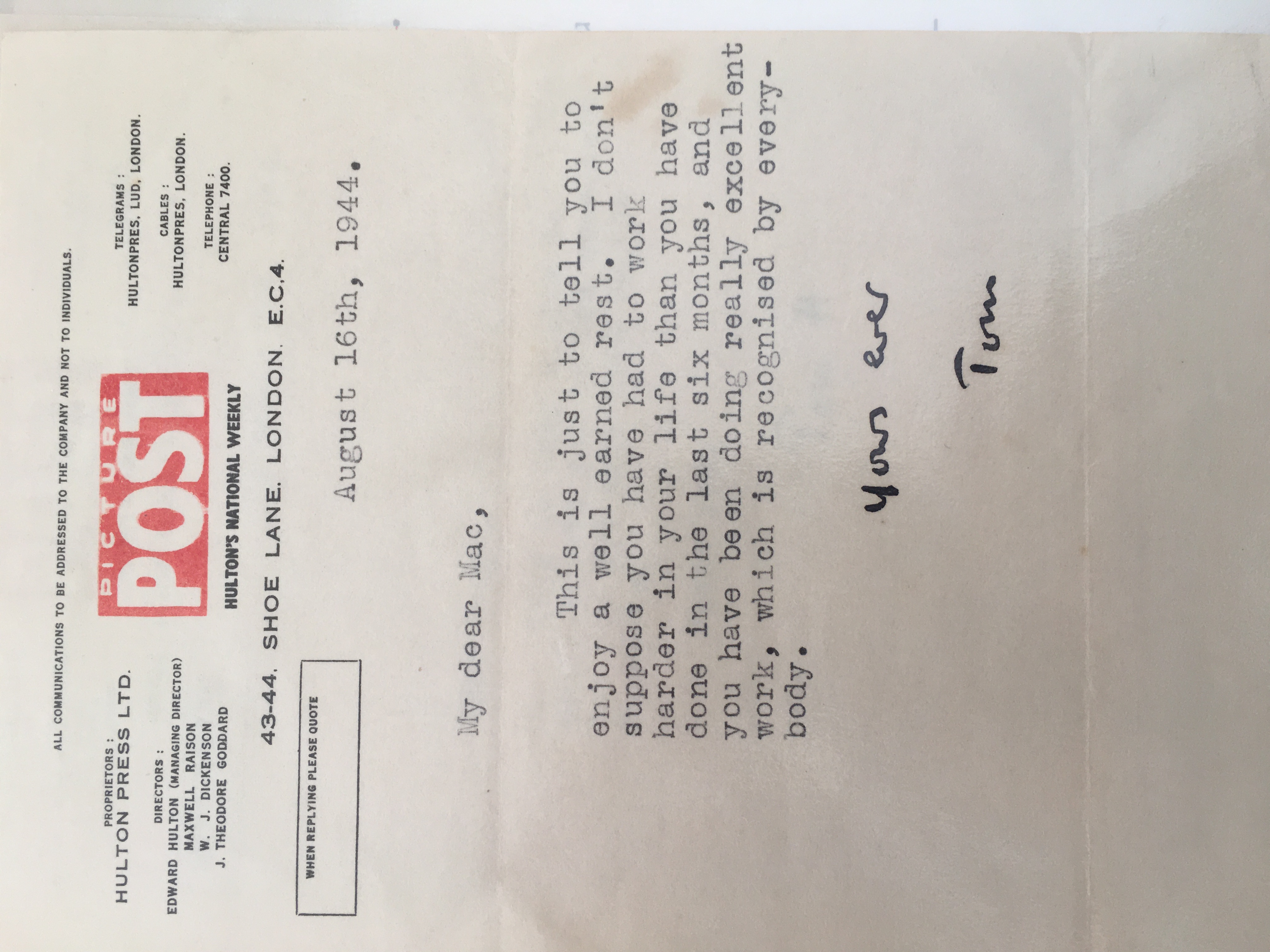A PICTURE POST PHOTOGRAPHER: HAYWOOD MAGEE
8. After Picture Post
Magee retired in 1956, shortly before Picture Post closed for good, after Edward Hulton’s abrupt decision to end publication.
There is a photo of Magee playing the violin, with Bert Hardy and others, “busking” for the welfare of the sacked photographers.
But he had already taken up the offer of early retirement, on a generous pension of £20 a week (£1,000 a year – as much as miners were earning).
So while other, younger Picture Post staffers went off to make their names in television and Sunday colour supplements, Magee effectively gave up photography and moved to other pursuits.

Magee on the violin, as Picture Post closes

From the last Picture Post
Retirement
For a while, he traded antiquarian books, quite successfully.
Later, he bought a canoe used by wartime commandoes from a shop off Shoe Lane, and moved down to Hove to use it.
On a canoeing trip to the River Wye, he came across an isolated derelict cottage deep in the middle of Forest of Dean. He bought the cottage for £300, and spent much of his time there, remote from human company.
Perhaps there was a depressive aspect to his behaviour; but his grandchildren visited the cottage, and “had a wild time” in the forest.
In his last years, he had a stroke, and his life became difficult. He died in Worthing in 1981, aged 82.
In retrospect
By some accounts, Haywood Magee was happy to be forgotten, unconcerned about what history would make of his work.
Haywood Magee never had pretensions that he was other than a working photographer - one of the “hired hands of Picture Post”, as Martin Parr has called them (in contrast to self-assigned documentary photographers such as Roger Mayne, Bill Brandt or the Humphrey Spender of Mass Observation.)
Magee's photos do not change hands for large sums of money. Unlike Bert Hardy, he did not put any effort into self-publicising his work, or burnishing his legacy.
Despite his reticence, Haywood Magee was a constant and important figure in the history of the foremost picture magazine in this country, and deserves wider recognition.
Perhaps, in any case, his photography works best, not as single striking images, but seen as it was originally produced – as picture stories, collections of images to be seen together, building a composite picture.
He was, as the final Picture Post described him, “a teller of tales”, a photographer of narrative stories, a master of the photographic picture story.

A 1944 letter to Magee from Picture Post editor Tom Hopkinson
Images courtesy of the Magee family and Getty Images - Hulton Archive.

